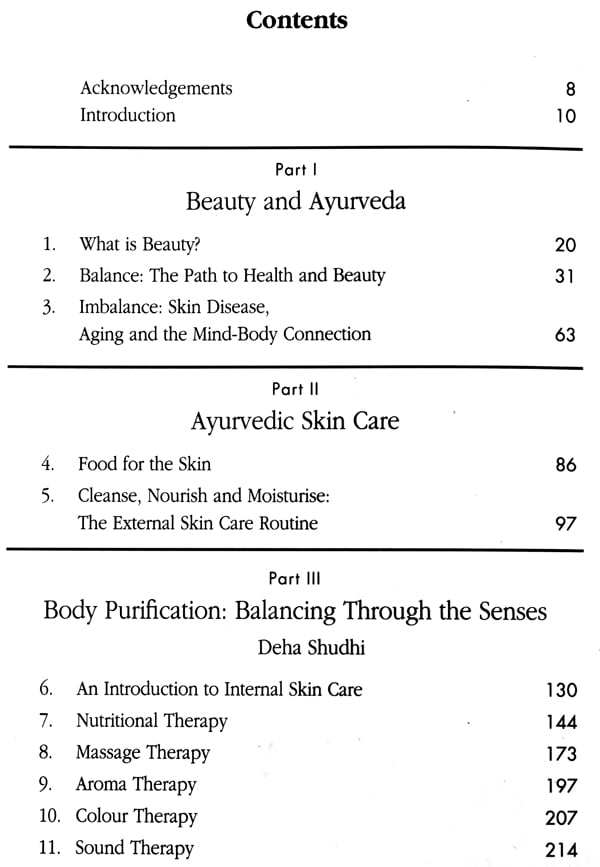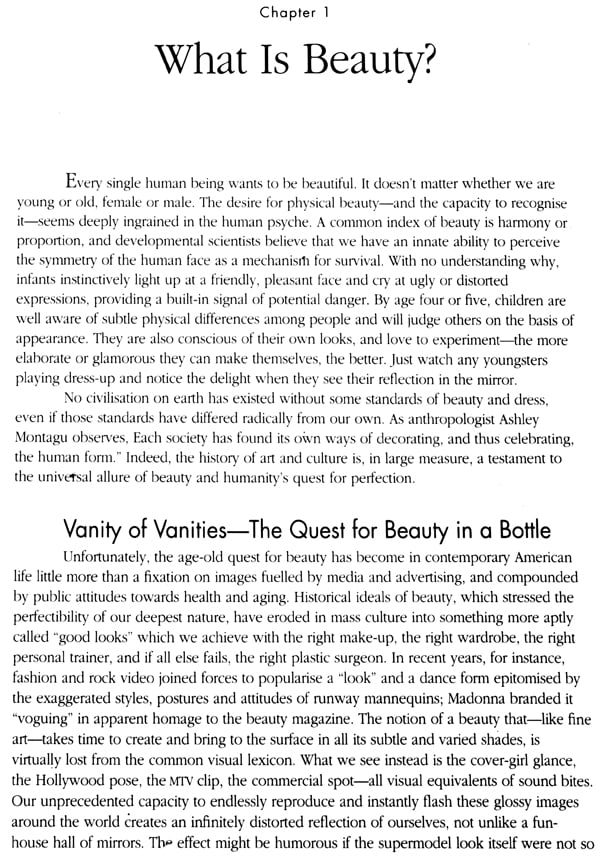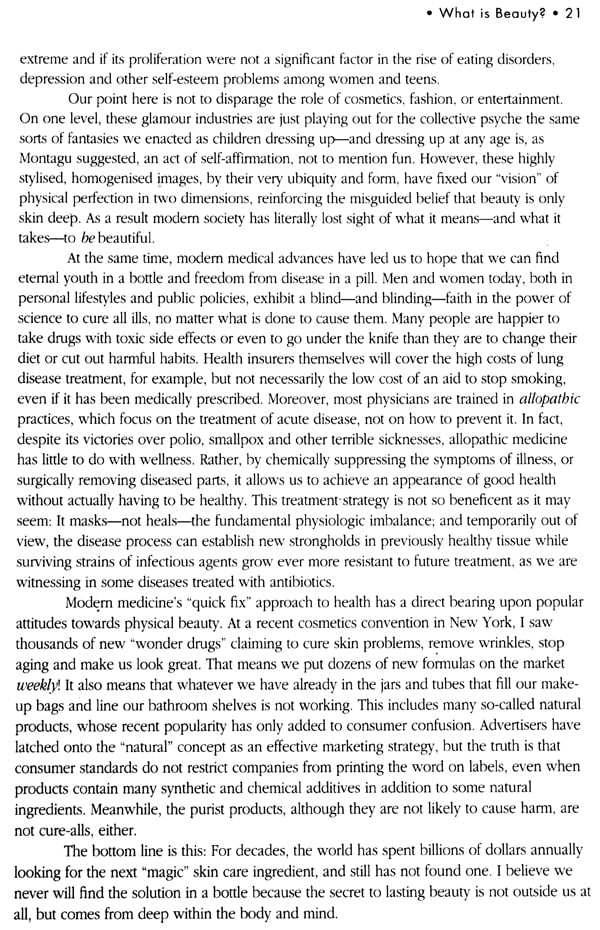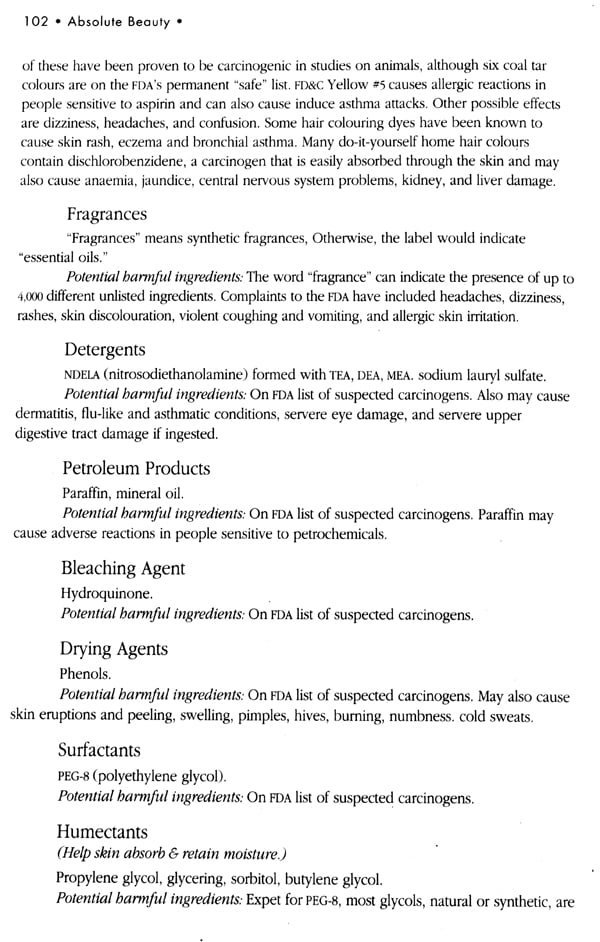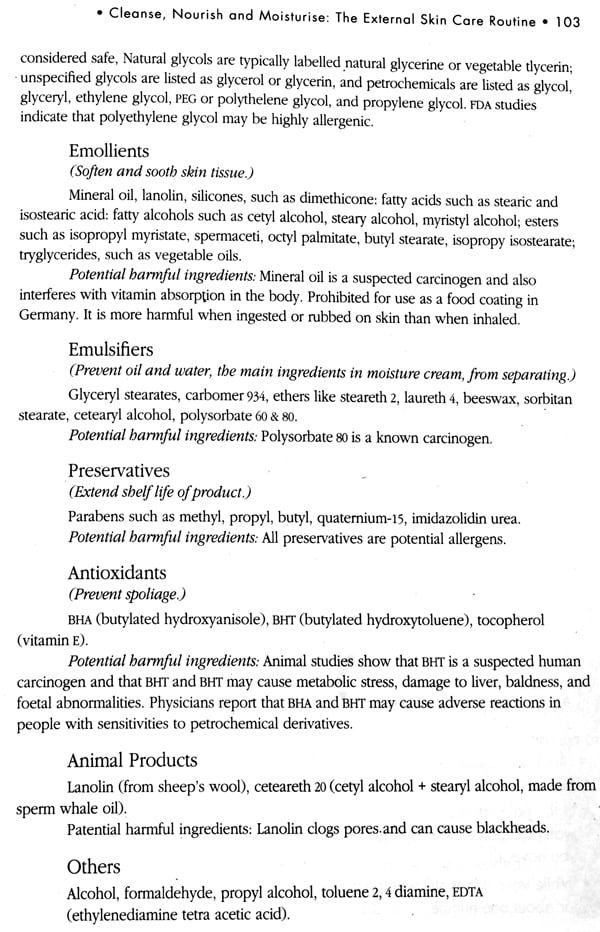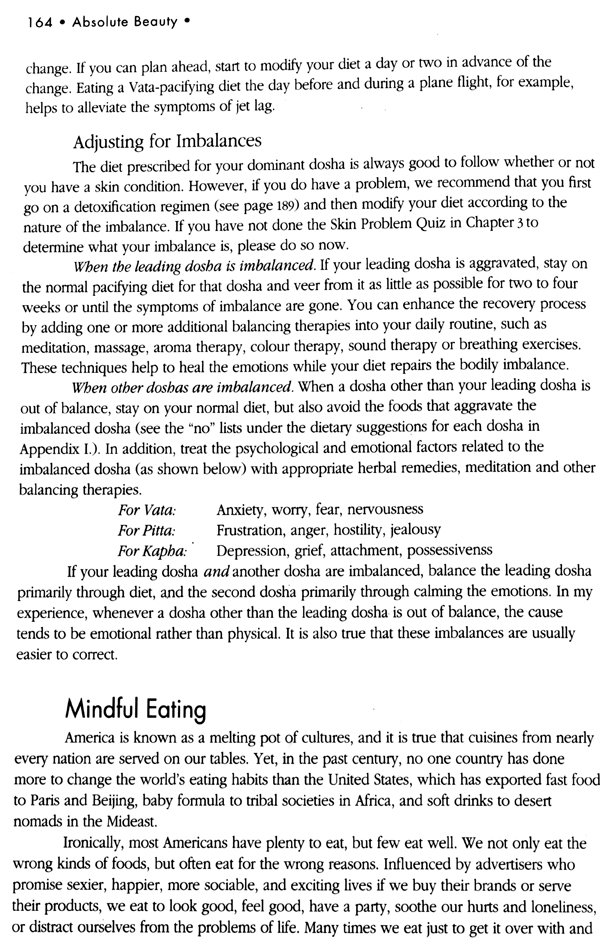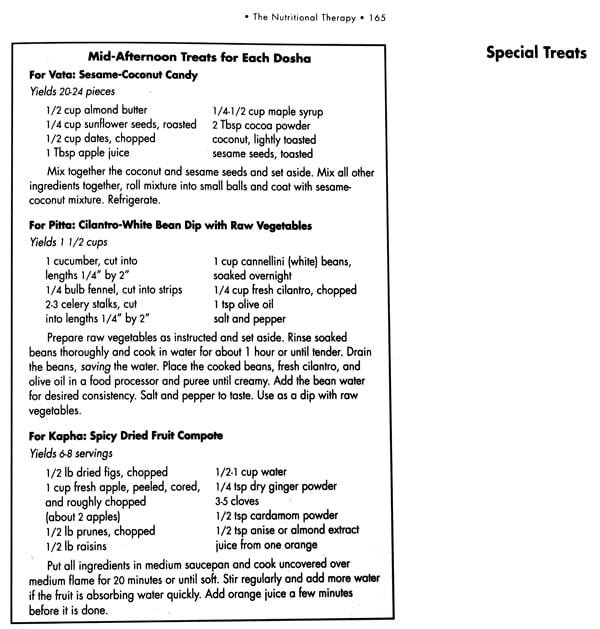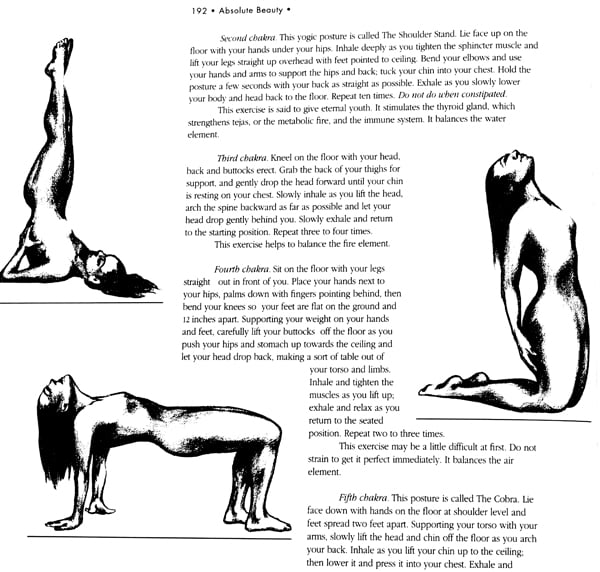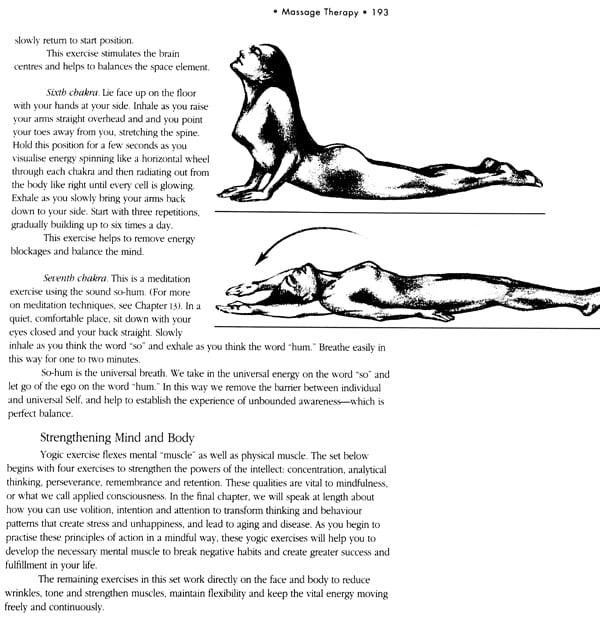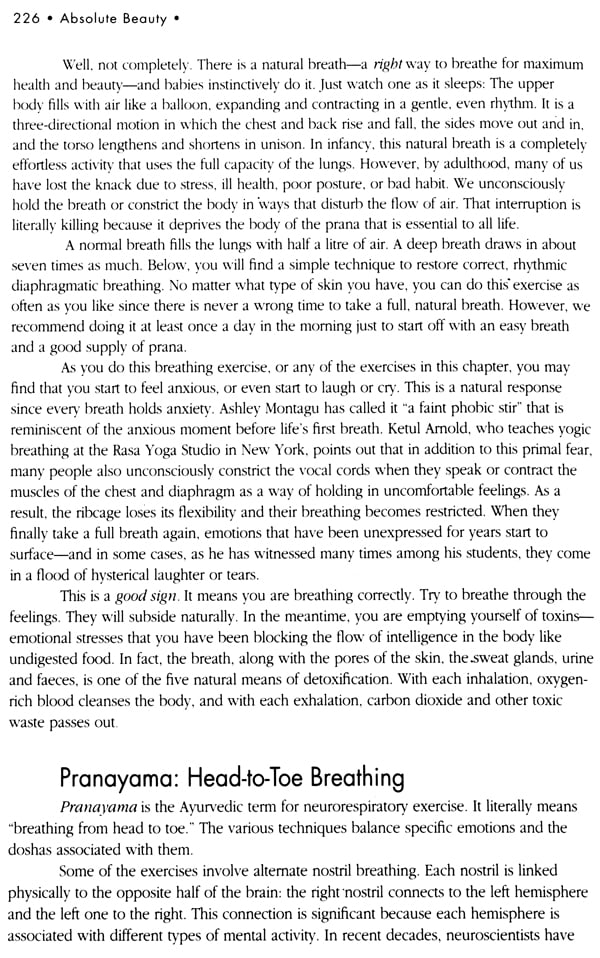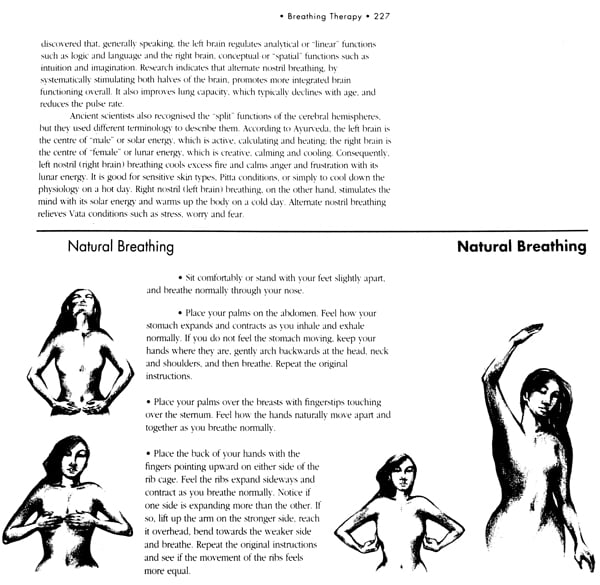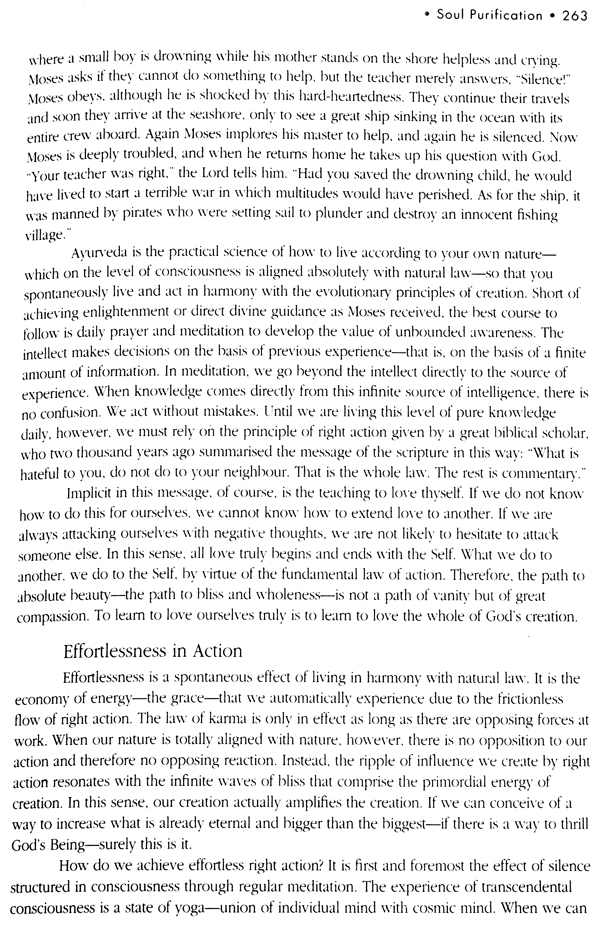
Absolute Beauty: Radiant Skin and Inner Harmony Through the Ancient Secrets of Ayurveda
Book Specification
| Item Code: | NAU686 |
| Author: | Pratima Raichur and Marin Cohn |
| Publisher: | Mapin Publishing Pvt. Ltd. |
| Language: | English |
| Edition: | 1998 |
| ISBN: | 8185822530 |
| Pages: | 287 (Throughout B/W Illustrations) |
| Cover: | PAPERBACK |
| Other Details | 11.00 X 11.00 inch |
| Weight | 1.19 kg |
Book Description
In India, where I was born in 1939, physicians have known the secrets to flawless skin and ageless beauty for 6,000 years. Those secrets, which you will learn in this book, are contained in one of the world’s oldest systems of health care and healing named Ayurveda, which means knowledge of life or longevity.
My informal introduction to this ancient science came during my childhood at home, Where everyone in my extended family lived in accord with Ayurvedic traditions. Our meals were prepared in Ayurvedic style to maintain physical health, and our daily routine included meditation and other practices to balance the mind and spirit. It was a loving, happy family life and, like a typical child, I was unaware that our way of living was different from any other. However, I did recognise at a young age that there seemed to be something special about my mother and her mother: They were striking women whose inner poise and outer radiance never went unnoticed, no matter where we were.
My formal education in Ayurveda began, I confess, somewhat less happily. It was in my early adolescence under the tutelage of a famous physician who happened to be my family’s neighbour. At 80, he had come to need some assistance with his work, and I became the reluctant recruit whom he called in to help. Every evening after school, I spent a couple of hours in his home, either reading to him or helping him to make various pills and remedies. Not surprisingly, at age 13, I was not very pleased to spend my time with this elderly man or to learn his strange formulas, but he was a relentless taskmaster and insisted that I record everything he said in notebooks. "Today you don’t understand the importance of what we are doing," he told me, "but one day you will have a use for all this in your life."
Years later, when I embarked on the career that has culminated in this book, I remembered the doctor’s words and realised how prescient he was. Those long-forgotten notebooks were filled with Ayurvedic prescriptions for the care of the skin. By then, I had a science degree from Bombay University and was married, with an infant daughter. I began to work as a chemist in England while my husband completed his medical training, and later | returned to India to work at a cancer research hospital.
One day, two of my hospital colleagues came into the laboratory very distraught. Both had acne problems and had gone the day before to get facials. Their treatments had left black patches all over their skin, which looked worse than the acne, and now they were in tears. To everyone's surprise, including my own, I said to them, "You should have told me before you went for the facials. I could have prepared something to help you."
That night, for the first time in over a decade, I re-read the Ayurvedic recipes I had so dutifully transcribed as a young girl. Since Ayurveda does not include a specific investigation of skin disease, I had never thought to apply its principles and techniques to the problem before this incident. By then, however, I knew a lot about cosmetic chemistry, and with my combined knowledge of ancient and modern science, I created a special mix of herbs and oils, which I delivered to my friends the next morning. Within days, their complexions cleared up completely. Word spread, and I was soon inundated with requests for help from people with problem skin. Each time prepared a new remedy, everyone could see the positive results on the person who used it
Meanwhile, the efficacy of the Ayurvedic preparations aroused my curiosity as a scientist. I wondered how these age-old formulas worked from a biochemical standpoint The more I thought about it, the more questions I had: How do these preparations activate healing? What causes skin problems in the first place? And why do some of us have them while others don’t? I decided to pursue my research where I could make the greatest contribution—by bridging my understanding of modern chemical science with my knowledge of the use of herbs and oils according to India’s oldest science. With my baby at 7 home to care for as well, I left my job at the hospital and began to study Ayurveda in earnest.
Why do my treatments succeed where other beauty regimens and even modern medicine fail? They work because Ayurveda provides the key to health and healing that
Western approaches lack: knowledge of the individual, not just the illness.
When most Western physicians and skin care experts see a condition like my friends’, they are trained to examine the parts—the disorder and its various physical symptoms. Generally speaking, oily skin is treated with astringents, and dry skin is treated with oils: that is, the outward effect dictates the cure. In the case of acne, a doctor will diagnose the presence of a certain type of bacterium as the cause of the problem and will treat the infected skin with the appropriate drugs or topical products. In a certain percentage of cases, this approach will help reduce or eliminate the acne, at least until the next breakout. |
**Contents and Sample Pages**
